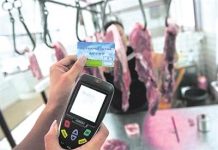
Food safety traceability management information system
[ad_1]

Shenyang Kaitai Technology Co., Ltd. “RFID Food Safety Traceability Management Information System”, which manages the growth, production, processing, circulation and sales of food through RFID technology to ensure that consumers can track food and improve food safety sex.
【System Background】
From mad cow disease, foot-and-mouth disease to water-infused meat, poisoned leeks, problematic milk powder, Sudan Red No. 1, etc., traditional market supervision is not effective enough. Food safety issues are always threatening the health of the people. Government departments need to use information technology. Carry out law enforcement measures to improve the management level. Solve the adverse effects of food safety issues on the construction of a harmonious society, establish an effective food safety traceability system, find out the links of accidents in the first time, provide the people with food safety early warning information in a timely manner, and quickly approve problematic approvals. Sub-food recalls to protect the health of the general public is already the primary responsibility of the food supervision department, and there is an urgent need to formulate and implement safety monitoring of food programs.
【system introduction】
The RFID food safety traceability management information system is a solution that can connect production, inspection, supervision and consumption. It can let consumers understand the hygienic and safe food production and circulation process, and improve the consumer’s confidence in food management information system . The system provides a traceability model of “from farmland to table”, extracts production, processing, circulation, consumption and other supply chain links that consumers care about, and establishes a food safety information database. Once problems are found, they can be effectively controlled based on the traceability. And recalls to protect the legitimate rights and interests of consumers from the source. Continuously monitor the food from the source to the table, form a food safety monitoring database, and conduct risk assessment on the monitoring data.
The key technology of food safety traceability is data collection technology. The current data collection technologies used for food safety traceability mainly include one-dimensional bar codes, RFID electronic tags and two-dimensional bar codes.
【System Overview】
The system includes a two-level platform, four subsystems, and relies on the network environment of the government’s industrial and commercial bureau.
The establishment of a city-wide unified central database on the first-level platform is the data management center of the entire system, which will realize the management of traceable data, food recall, monitoring and early warning, and decision-making analysis within the city or even the province. The secondary platform consists of a fruit and vegetable traceability subsystem, an animal product traceability subsystem, a prepackaged food traceability subsystem, and a food traceability subsystem.
[Schematic diagram of food safety traceability system]

[Principle of Food Safety Traceability]
1. In the planting/raising link of primary agricultural products, the traceability unit is determined according to the planting/raising plan, and the planting/raising information is recorded with the traceability unit as the unit. Record the breeding information on the RFID electronic tag, such as putting the ear tag of the RFID electronic tag on the cow when raising the cow.
2. In the processing link, when the raw materials are checked into the warehouse, the raw material checking and receiving database information is established to record the raw material inspection and traceability information, and the raw material batches and the planting batches are one-to-one correspondence; during the processing, the raw materials are checked into the warehouse after the processing batch The second is the smallest traceability unit, which records processing information and raw material information in a two-dimensional bar code (or one-dimensional bar code).
3. In the logistics link, take the transport batch as the unit, and read the logistics information in the RFID electronic tag on the packing box when receiving and dispatching.
4. In the sales link, the smallest retail unit (single product package) is used as the traceability unit, and the two-dimensional barcode (or one-dimensional barcode) is scanned by the scanner or the automatic query terminal is used to read the two-dimensional barcode (or one-dimensional barcode) information for traceability .
The “RFID Food Safety Traceability Management Information System” developed by Kaitai Technology, through the application of RFID technology, not only guarantees the supervision of the regulatory authorities, but also solves the food safety problems that have long affected the health of the people, and is a harmonious Contributed to the long-term development of society.
[ad_2]



